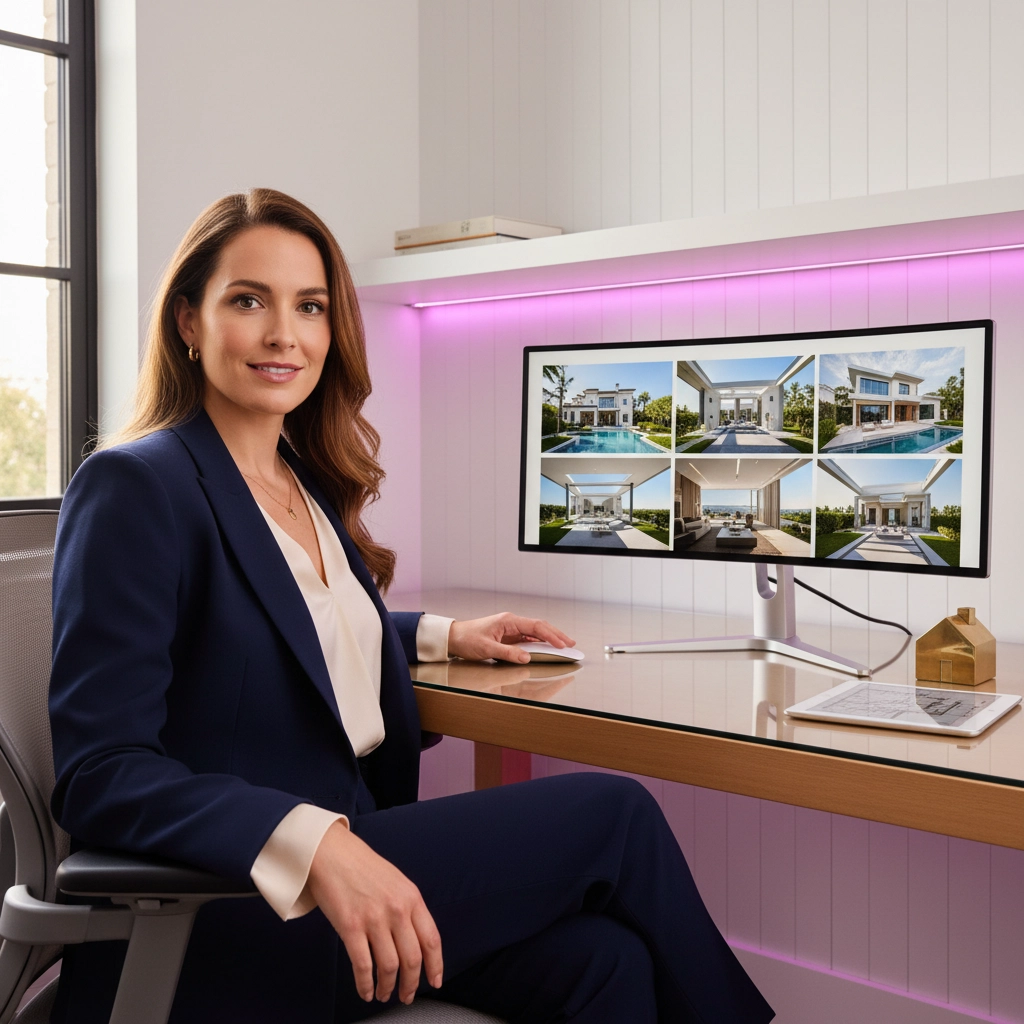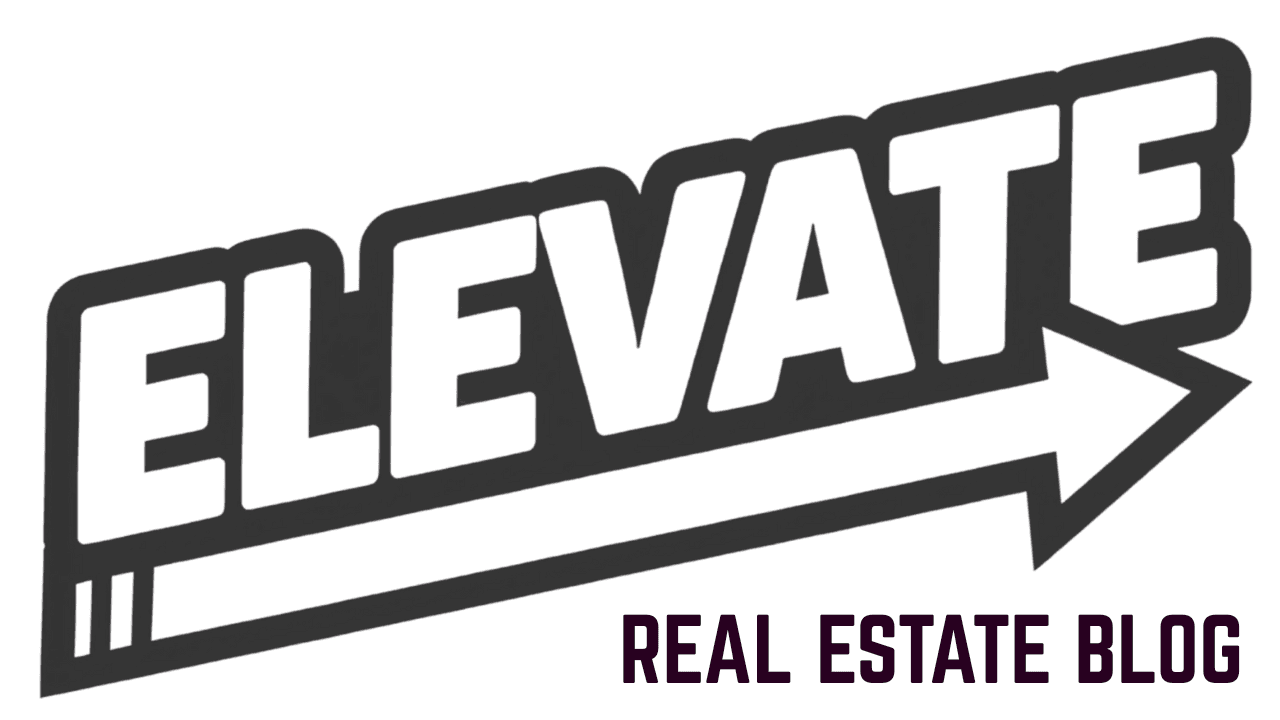Your visual identity determines whether prospects remember you or forget you exist. In real estate, where trust and recognition drive referrals, inconsistent branding costs you clients.
A visual identity encompasses every physical representation of your business. Logo, colors, typography, photography style. When these elements work together consistently, you build instant recognition and communicate professionalism.
Core Elements of Real Estate Visual Identity
Logo Design
Your logo anchors your entire visual system. Keep it simple, scalable, and distinctive from competitors in your market.
Effective real estate logos incorporate your name, initials, or a property-related icon. Avoid overly complex designs that lose clarity when scaled down for business cards or social media avatars.
Test your logo at various sizes. If details become unclear at small sizes, simplify the design.
Color Psychology in Real Estate
Colors trigger emotional responses. Navy and gold signal luxury and trust. Bright orange and teal position you as modern and energetic. Deep green suggests stability and growth.

Select two primary colors and two complementary colors. Limit your palette to maintain cohesion across all materials.
Consider your target market. First-time buyers respond differently to color choices than luxury home sellers. Research your local market demographics before finalizing your color scheme.
Typography Strategy
Font choices impact perception more than most agents realize. Select one primary font for headlines and one secondary font for body text.
Serif fonts like Times New Roman communicate tradition and reliability. Sans-serif fonts like Arial project modern professionalism. Script fonts can work for luxury markets but reduce readability.
Stick to two font families maximum. More creates visual chaos.
Photography Standards
Real estate relies heavily on visual content. Develop consistent photography guidelines that reflect your brand personality.
Bright and airy photography suits family-focused agents. Dramatic, moody images work for luxury markets. Classic, balanced shots appeal to traditional buyers.

Create standards for property photos, headshots, team photos, and social media content. Use consistent filters, lighting angles, and composition styles.
Implementation Across Marketing Channels
Digital Presence
Your website serves as your primary brand touchpoint. Apply your visual identity consistently across homepage design, navigation elements, and content layouts.
Email signatures, newsletters, and automated sequences must reflect your brand guidelines. Inconsistent email design undermines your professional image.
Social media profiles require particular attention. Profile images, cover photos, and post templates should align with your established visual identity.
Property Marketing Materials
Create templates for listing presentations, feature sheets, and virtual tour graphics. These templates maintain brand consistency while allowing flexibility for individual properties.
Open house signage, brochures, and digital advertisements should reinforce your visual identity. Prospects should recognize your materials instantly.

Traditional Marketing
Business cards, vehicle wraps, and office signage require careful brand application. Print materials use different color profiles than digital designs, so test your colors across both mediums.
Direct mail campaigns become more effective when recipients recognize your brand from previous touchpoints.
Building Recognition Through Consistency
Consistent visual branding builds trust during significant financial decisions. When prospects see cohesive design across your website, social media, and property materials, they perceive you as organized and professional.
Recognition drives referrals. Past clients remember agents with distinctive, consistent branding. Inconsistent visuals make you forgettable.
Track your brand recognition through client feedback and referral patterns. Agents with strong visual identities typically see higher referral rates.
Technology Integration for Brand Management
Modern real estate requires efficient brand management across multiple platforms. Manual design updates consume valuable prospecting time.
PWRU's content management system streamlines brand application across marketing materials. Automated templates ensure consistency while reducing design time. The platform's AI-powered tools help maintain visual standards across social media posts, email campaigns, and property marketing materials.

Integrate your brand guidelines into your CRM workflows. Automated systems maintain consistency better than manual processes.
Measuring Visual Identity Effectiveness
Track metrics that indicate brand recognition strength. Monitor website direct traffic versus search traffic. Higher direct traffic suggests stronger brand recognition.
Social media engagement rates often improve with consistent visual branding. Branded content typically receives more shares and comments than generic posts.
Survey past clients about brand recall. Strong visual identities create memorable experiences that drive future referrals.
Common Visual Identity Mistakes
Agents frequently dilute their brand by using multiple logo variations or inconsistent color applications. Stick to approved brand elements across all materials.
Photography inconsistency undermines professional perception. Mixing bright, airy photos with dark, moody images confuses your brand message.
Font mixing creates visual chaos. Limiting typography choices strengthens brand recognition.
Ignoring mobile optimization weakens your visual identity. Over 76% of home searches begin on mobile devices. Test all brand elements on small screens.
Maintaining Brand Evolution
Visual identities require periodic updates to stay current. Plan subtle refreshes every three to five years.
Document all brand guidelines in a style guide. Include logo usage rules, color codes, typography specifications, and photography standards.
Train team members on proper brand application. Consistent implementation requires clear guidelines and regular training.

Audit your materials quarterly. Check websites, social media profiles, and marketing materials for brand compliance.
Advanced Brand Integration Strategies
Develop brand-specific templates for different property types. Luxury listings require different visual treatment than starter homes, but both should reflect your core brand identity.
Create seasonal variations that maintain brand recognition while feeling fresh. Holiday-themed content can incorporate your brand colors and fonts without major design changes.
Consider how your visual identity translates to video content. Consistent intro graphics, lower thirds, and color schemes strengthen brand recognition in video marketing.
Taking Action on Your Visual Identity
Strong visual identity requires systematic implementation. Start with your core elements: logo, colors, fonts, and photography style.
Apply these consistently across your most important touchpoints first. Website, business cards, and social media profiles should receive priority attention.
Ready to streamline your brand management and boost your marketing efficiency? PWRU's comprehensive platform helps real estate professionals maintain consistent visual identity while automating routine marketing tasks. Discover how our AI-powered tools can strengthen your brand recognition and drive more referrals at plan.pwru.app.
Your visual identity either builds your business or undermines it. Consistency creates recognition. Recognition generates referrals. Invest in developing and maintaining a strong visual identity that sets you apart in your market.





